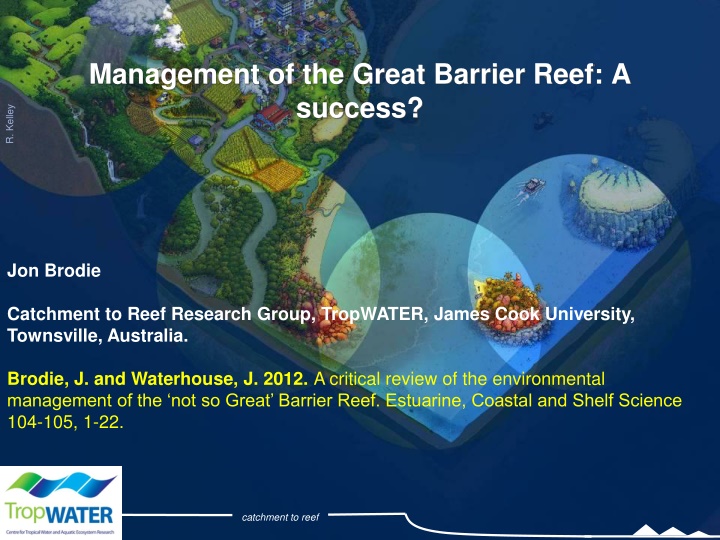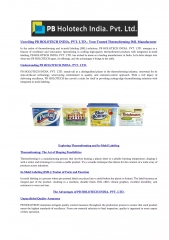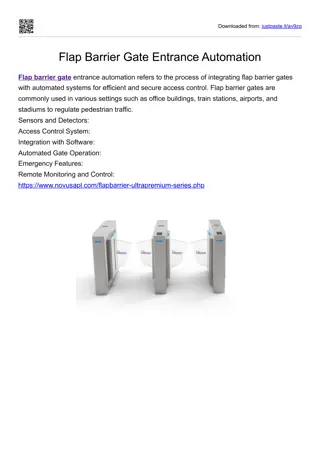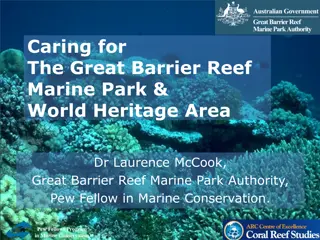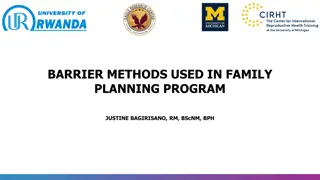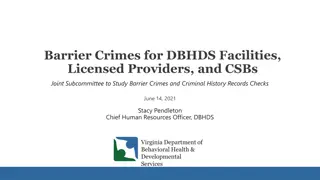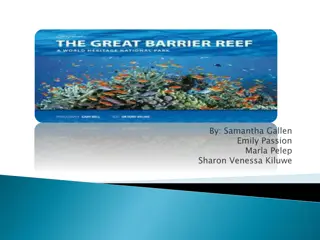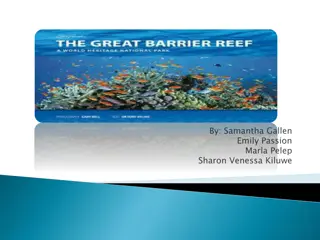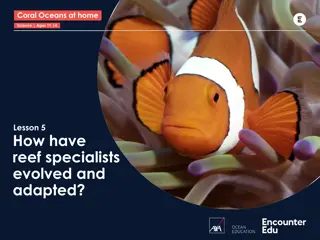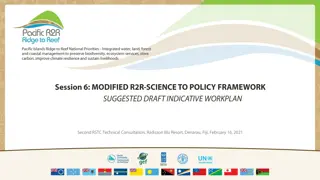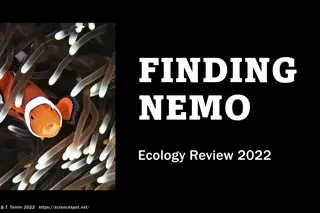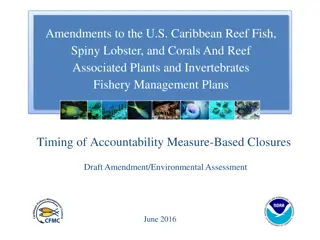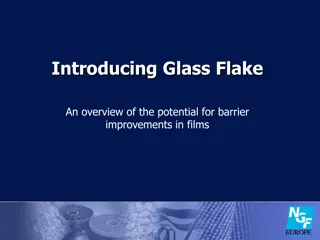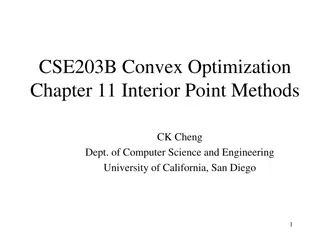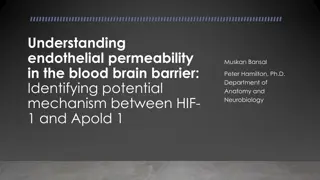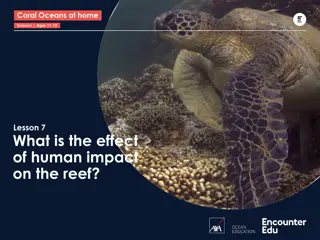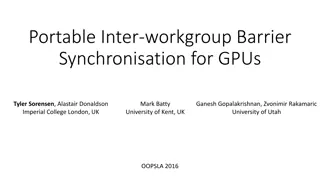Environmental Challenges Facing the Great Barrier Reef
The management of the Great Barrier Reef has faced significant challenges leading to a decline in coral cover, dugong populations, seagrass health, and shark populations. Issues such as fishing practices, terrestrial pollutant runoff, and climate change have contributed to the deterioration of the reef's ecosystem. The increase in crown of thorns starfish outbreaks and coral diseases further emphasize the urgency of addressing these environmental issues to safeguard the Great Barrier Reef's future.
Download Presentation

Please find below an Image/Link to download the presentation.
The content on the website is provided AS IS for your information and personal use only. It may not be sold, licensed, or shared on other websites without obtaining consent from the author.If you encounter any issues during the download, it is possible that the publisher has removed the file from their server.
You are allowed to download the files provided on this website for personal or commercial use, subject to the condition that they are used lawfully. All files are the property of their respective owners.
The content on the website is provided AS IS for your information and personal use only. It may not be sold, licensed, or shared on other websites without obtaining consent from the author.
E N D
Presentation Transcript
Management of the Great Barrier Reef: A success? R. Kelley Jon Brodie Catchment to Reef Research Group, TropWATER, James Cook University, Townsville, Australia. Brodie, J. and Waterhouse, J. 2012. A critical review of the environmental management of the not so Great Barrier Reef. Estuarine, Coastal and Shelf Science 104-105, 1-22. catchment to reef
Answer NO
Great Barrier Reef WHA, Marine Park and Catchment Area
Status of the GBR (from Brodie and Waterhouse 2012) Coral cover from about 40% fifty years ago to less than 20% currently and predicted to decline further (Hughes et al. 2011; De ath et al. in review) Dugong populations continue to decline Seagrass in trouble especially associated with both chronic stress and extreme events (Devlin et al. 2012). Shark populations declining (Robins et al. 2006) Crown of thorns starfish outbreaks started again for the 4th wave (Fabricius et al. in prep.) Increasing incidence of coral diseases Increasing water temperatures Declining calcification (e.g. Cooper et al. )
Coral cover decline Coral cover in ~1960 = 40 55% (Bruno and Selig 2007; Bellwood et al. 2004; Hughes et al. 2011) Coral cover in 1986 = 28% (Sweatman et al. 2011) Coral cover in 2004 = 22% (Sweatman et al. 2011) Coral cover in 2012 = <20% (De ath et al. in review) Coral cover in 2020?
Seagrass and dugong (and turtle?) decline
Crown of thorns starfish again Three waves of outbreaks 1962 1975; 1978 1990; 1993 2005 Now well understood to be linked to increased nutrient discharge from the land (Brodie et al. 2005; Fabricius et al. 2010) Removal of fish predators may also be linked. No-take zones have less COTs. (Sweatman et al 2009) Largest cause of coral mortality on the GBR (Osborn et al. 2011; Hughes et al. 2011) Fourth wave of outbreaks now likely to be starting off Cairns region (where all the other waves began) (Fabricius et al. in prep.) We can now expect high coral mortality from COTS in the central GBR over the next 10 years.
What are the proven issues? Fishing http://marksecology.blogspot.com/2011/04/big-fish-review-part-2.html Terrestrial pollutant runoff Bainbridge et al. 2012 Climate change Climateshifts
History of management Marine Park Act 1975 Great Barrier Reef Marine Park Authority established 1975 AIMS established 1972 Zoning complete by about 1990 Plans of management Pesticide management through APVMA However management over the first 20 years focussed largely on tourism and exclusion of fishing only in the small area of no-take zones. Traditional fisheries management prevailed as well by the Qld. Gov.
What about management of fishing, water quality and climate change? More intensive fishing management with trawl management planning in about 2000 and the rezoning of 2004 Reef Plan first implemented through the Australian Government s Reef Rescue starting in 2008 and the Queensland Government s Reef Protection Package in 2009/10 (Brodie et al. 2011,2012) Climate change management ?? Pesticide management through APVMA ineffective (King et al. 2012)
Status of GBRWHA and water quality Scientific consensus statement on water quality in the Great Barrier Reef (Brodie et al 2008) Water discharged from rivers to the GBR continues to be of poor quality in many locations. Land derived contaminants, including suspended sediments, nutrients and pesticides are present in the GBR at concentrations likely to cause environmental harm. There is strengthened evidence of the causal relationship between water quality and coastal and marine ecosystem health. The health of freshwater ecosystems is impaired by agricultural land use, hydrological change, riparian degradation and weed infestation Current management interventions are not effectively solving the problem. Climate change and major land use change will have confounding influences on GBR health. Effective science coordination to collate, synthesise and integrate disparate knowledge across disciplines is urgently needed. A revised and updated Consensus Statement is in preparation over the next 6 months.
Water quality management response Research program 1980 1990 (moderate funding & effort) and 1990 2000 (high funding & effort) First consensus statement Williams et al. 2001 Water Quality Action Plan (Brodie et al 2001) follows decades of research and monitoring Sewage discharges relatively effectively managed (at least in terms of nutrients) in the 1990s. Reef Water Quality Protection Plan (RWQPP) 2003: Joint Australian and Queensland State governments plan. halt and reverse the decline in water quality entering the Reef within ten years Regional water quality improvement plans (2005 2008) ReefPlan 2009: Updated version of RWQPP with more definite targets and actions Reef Rescue (2008): Australian Government voluntary incentive based program ($200M) over 5 years for on-ground works, monitoring, research and partnerships Great Barrier Reef Protection Amendment Act 2009: Queensland Government regulatory regime to improve water quality for the GBR So ~30 years to get from beginning of research and monitoring to effective management!
WQ issues in the coastal areas often outside the GBRMP Different pollutants toxic metals (from ports, coastal industry), Endocrine Disrupting Chemicals (e.g.pesticides - atrazine, sewage effluent, - various organic chemicals), pharmaceuticals, petroleum hydrocarbons, coal dust, anti-foulants (e.g. TBT- Hay Point case), nanoparticles Different industries/landuses (besides agriculture) ports shipping, urban, heavy industry, fish cage culture. Poorly flushed waters (estuaries, bays, narrows ), pollutant entry often in low river flow conditions Adjacent freshwater systems (rivers, wetlands) also under threat from multiple water quality impacts (and other impacts) and vitally connected to the GBRWHA but little concern or management response.
Management of the outside the MP WHA Need for an integrated management regime for this area as for the GBRMP. However some sections may have to be sacrificed for development but these areas need to be centralised into a few hubs and then still managed as well as possible.
Why has management failed Early emphasis on tourism management which was not the main issue. Fishing only comprehensively managed by 2005 Terrestrial runoff only managed by 2009 Pesticide management still an issue due to ineffectiveness of APVMA Climate change not managed at all Coastal development poorly managed and in contrast to other issues management seems to be getting worse e.g. Gladstone Port Difficulties of getting scientific consensus, political agreement , organizational structure and a funded management response.
Conclusions prognosis for the GBR Poor in the face of further COTs, bleaching, increased extreme weather, increasing coastal development Hence the need to continue the things we can do terrestrial runoff management; enforcing the zoning; better coastal management improved resilience GBRWHA managed as a unit and not in several parts as happens now. Need for ecosystem based management.
